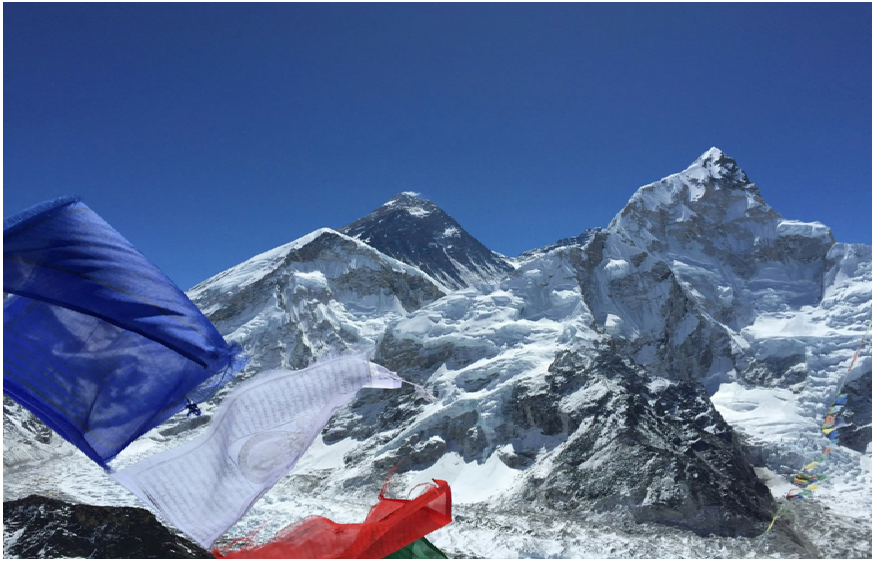
Orchestra of Snow: The Everest Route EBC trek | Island peak Climbing | Cho La Pass Trek
Introduction: Where Hush Meets Symphony
There are few places on soil where quiet thunders as capably as it does in the tall Himalayas. Each blast of wind, each crunch of snow underneath the boots, and each ripple of a supplication hail contributes to the ethereal song that floats through the Everest locale. This is more than a fair trek—this is an ensemble of snow, an ensemble of challenge, excellence, and transformation.The Everest Course isn’t a solitary way but a radiant set of three composed of three unmistakable developments: the Everest Base Camp (EBC) trek, the brave rising of Island peak, and the impressive crossing of the Cho La Pass. Together, they make a trip where the physical world mixes consistently with the otherworldly, creating an immortal enterprise in the shadow of giants.
EBC trek: Strolling Through Legends
The Everest Base Camp trip is where utmost dreams of the Himalayas start. This notorious course winds its way through the Khumbu Valley, climbing from the bustling city of Lukla to the inconceivable base of the world’s most noteworthy peak, Mount Everest.
Cultural Tapestry
From the very beginning step in Lukla, trekkers are submerged in Sherpa culture. Antiquated religious communities, such as Tengboche Cloister, welcome guests with colorful supplication wheels and chanting ministers. Many stones and shuddering banners line the trails, imbuing the travel with otherworldly resonance.
Diverse Landscapes:
As you rise, the territory transforms—lush pine timberlands close to Phakding give way to elevated knolls in Dingboche and rough moraines close to Gorak Shep. Each turn uncovers a modern, perfect work of art painted by nature: Ama Dablam’s culminating pyramid, Lhotse’s frosty flanks, and at long last, Everest itself—silent, glad, and eternal.
Personal Triumph:
Reaching Everest Base Camp (5,364 m) is not just a geological point of reference; it’s a
profoundly enthusiastic minute. The discussion is lean, the cold is gnawing, and each breath is hard-earned—but standing at the foot of the world’s most noteworthy mountain touches off something significant. It’s a minute of wonder, appreciation, and calm celebration.
Island peak Climbing: Touching the Sky
While the EBC trek tests continuance, Island peak Climbing (Imja Tse – 6,189 m) requires desire. This is where trekkers advance into mountain climbers, venturing past the beaten way and into the domain of high-altitude climbing.
Why “Island” Peak?
So named by Eric Shipton in 1951, the peak shows up like an island rising from an ocean of ice. Encompassed by the towering Lhotse and Ama Dablam, Island peak offers one of the most beautiful and open presentations to Himalayan climbing.
The Ascent:
Starting from Chhukung, climbers experience preparing in fundamental mountaineering techniques—use of crampons, ropes, ice tomahawks, and settled lines. The climb starts in the pre-dawn haziness. Headlamps gleam like stars as climbers rise up ice sheets, scramble over ridgelines, and at long last reach the summit ridge.
Summit Reward:
At the summit, the display is strange. peaks extend in each direction—Makalu, Baruntse, and the Everest massif tower in grave glory. The world underneath is a white sea of clouds. For numerous people, this is a life-defining moment—proof that tirelessness turns inconceivability into triumph.
Challenges:
Climbing Island peak isn’t just physical; it’s mental. The height, the cold, and the presentation can be overpowering. But it’s absolutely these hardships that make the remuneration all the more profound.
Cho La Pass trek: The Solidified Gateway
Connecting the Gokyo Valley with the EBC course, the Cho La Pass trek (5,420 m) is not simply a shortcut—it’s an emotional, cold navigate that includes coarseness and magnificence to any Himalayan trek.
A Frosty Corridor:
The path to Cho La veers after Dzongla, rising into a high-altitude world of shale and ice. This portion of the trek is soaked, regularly snow-covered, and requires center and strength. Not at all like the well-trodden ways to EBC, Cho La feels crude and remote—a section implied for genuine adventurers.
Crossing the Pass:
The climb started some time recently at dawn. Trekkers climb limit switchbacks, crossing an ice sheet at the beat encompassed by sharp-edged peaks. The path can be dangerous, with loose jewels and frosty patches, but the views are spectacular — like venturing into the heart of the Himalayas.
Descent to Gokyo:
After crossing the pass, the path plummets toward the turquoise lakes of Gokyo, another covered-up diamond of the Everest locale. The differentiation is dazzling: frosty blues meet cold whites in a pool where the hush is broken, as it were, by the sound of yak chimes and the crunch of ice.
The Himalayan Trio: An Ensemble in Three Acts
When combined, the EBC trek, Island peak climb, and Cho La Pass crossing shape a circular experience that is as challenging as it is fulfilling. Each section has its own rhythm—slow and relentless in the starting, rising in pressure and elevation with Island peak, and settling in the emotional climax of Cho La.
This course isn’t fair; almost all the summits or the passes are around what happens along the way:
The fellowships were fashioned over glasses of butter tea in teahouses.
The calm minutes gazing into the chasm of a starlit sky.
The internal move that comes from persevering hardship and seeing majesty.
Preparation & Mentality: Regarding the Symphony
While the magnificence of the Everest course is verifiable, it requires regard, planning, and humility.
Training: Cardiovascular continuance, quality, and high-altitude conditioning are essential.
Gear: Appropriate gear—especially for Island Peak—is basic, counting climbing boots, tackles, and cold-weather clothing.
Acclimatization: Never rush the travel. Elevation affliction is genuine and perilous; permit your body to adjust.
Guidance: Enlisting experienced neighborhood guides guarantees security, social understanding, and a more profound association with the land.
Conclusion: The Music That Never Fades
In the amazing theater of mountains, the Orchestra of Snow plays on—ancient and unbroken. Each trekker, climber, and visionary who wanders into this world includes their possessive verse to the song.
The Everest Base Camp trek presents the melody.
The Island peak Climb crescendos with reason and power.
The Cho La Pass finale conveys a sensational resolution.
But the echoes of this trek—of solidified mornings, sunlit summits, and heartbeats in the cold—linger until the end of time. In conclusion, it’s not a fair trek. It’s a composition of boldness, ponder, and discovery—written in snow, sung by wind, and recollected in the soul.
Dare to march the Everest Route—and let the mountains compose your music.


